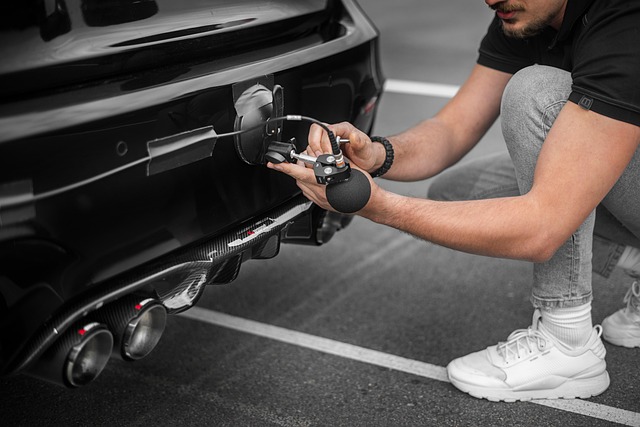Looking to register your car in California? This comprehensive guide breaks down the process, from understanding key requirements and gathering essential documents to navigating the crucial role of VIN (Vehicle Identification Number) verification. We provide a step-by-step approach, highlight common mistakes to avoid, and offer expert tips for a smooth registration experience. By following these insights, you’ll ensure a successful registration in California.
- Understanding the Requirements for Car Registration in California
- Gathering Necessary Documents for Vehicle Registration
- The Role of VIN Verification in the Registration Process
- Step-by-Step Guide to Registering Your Vehicle in California
- Common Mistakes to Avoid During Car Registration
Understanding the Requirements for Car Registration in California

Before registering your car in California, it’s crucial to understand the state’s specific requirements for vehicle registration. The process involves several key steps and documents to ensure your car meets safety and legal standards. One critical aspect is the Vehicle Identification Number (VIN) verification, which serves as a unique identifier for your vehicle. This step is essential to confirm the authenticity of the car and its components, ensuring it complies with emission and safety regulations.
In California, VIN inspection is often done through a mobile vin verifier or service, providing convenience and flexibility. These mobile options allow you to complete the VIN verification process without having to visit an official DMV location. This modern approach streamlines the registration process, making it more accessible for vehicle owners across the state. By adhering to these requirements, including timely VIN inspection, you’ll be well on your way to a smooth car registration experience in California.
Gathering Necessary Documents for Vehicle Registration

Before you begin the registration process, it’s crucial to gather all the essential documents required by the California Department of Motor Vehicles (DMV). This includes your vehicle’s Registration Application (Form DVF-1), which can be obtained online or in person at a DMV office. Additionally, you’ll need proof of insurance, a valid driver’s license, and the Vehicle Identification Number (VIN) verification report.
The VIN is a unique 17-character identifier for your vehicle, and obtaining a vin inspection through a mobile vin verifier or local mechanic is often the simplest method. This step is critical as it ensures the accuracy of your car’s information, which is essential for issuing a registration and ensuring road safety. Once you have these documents ready, you can smoothly transition to the next steps in the registration process.
The Role of VIN Verification in the Registration Process

The registration process for a car in California involves several critical steps, and one of the most crucial is Vehicle Identification Number (VIN) verification. This unique 17-character code serves as a digital fingerprint for your vehicle, providing essential information about its make, model, year, and even history. It’s akin to a car’s identity card, ensuring that every vehicle on the road can be accurately identified.
During registration, a VIN inspection is conducted to confirm the vehicle’s authenticity and prevent fraud. This verification step involves cross-referencing the provided VIN with reliable databases to ensure it matches the vehicle’s actual specifications and that there are no outstanding issues or recalls associated with it. Using mobile vin verifier services has become increasingly popular, as they offer a convenient and often faster alternative to traditional inspection methods. These mobile vin verification apps provide instant results, making the registration process smoother for both customers and DMV staff.
Step-by-Step Guide to Registering Your Vehicle in California

Registering a car in California involves several steps, but with proper preparation, it can be a straightforward process. Here’s your step-by-step guide to ensuring everything runs smoothly. First, gather all necessary documents like your vehicle’s registration from the previous state, proof of insurance, and a valid driver’s license. Then, complete the DVRA (Department of Motor Vehicles Registration Application) form, available online or in person at any DMV field office.
Next, conduct a VIN verification using a reliable method like a mobile vin verifier to ensure the vehicle’s identity and history match the details provided. Once your application is approved, you’ll receive your California registration certificate, license plate, and a sticker for your window. Always keep these documents updated and securely stored for future reference, including any changes in ownership or address.
Common Mistakes to Avoid During Car Registration

When registering your car in California, it’s crucial to avoid common mistakes that can lead to delays or issues. One significant blunder is neglecting the vin verification process. The Vehicle Identification Number (VIN) is unique to each vehicle and acts as a digital fingerprint for tracking ownership and history. Failing to verify this critical piece of information can cause problems down the line. Make sure you have accurate, up-to-date records of your VIN before starting the registration process.
Another frequent error involves not utilizing mobile vin inspection or mobile vin verification services. These convenient options allow you to get a digital copy of your vehicle’s history report right from your smartphone. With just a few clicks, you can access crucial details about previous owners, accident reports, and maintenance records. By forgoing this modern convenience, you risk encountering unexpected challenges during the registration procedure. Stay ahead of potential problems by embracing technology and leveraging mobile vin verification as part of your preparation.
Registering a car in California involves understanding specific requirements, gathering essential documents, and undergoing crucial VIN verification. By following the step-by-step guide provided and avoiding common mistakes, you can ensure a smooth process. Remember, proper registration is not only legal necessity but also helps protect your investment and ensures you’re covered in case of an emergency.



